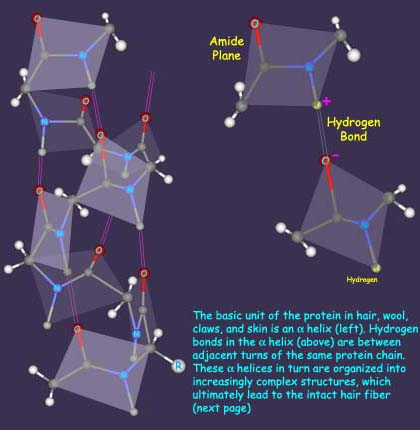|
This arrangement of bonds gives silk its familiar mechanical properties. Since stretching a silk fiber involves pulling against the covalent bonds of the protein chains, silk fibers are not very elastic or stretchable. However, they are quite bendable or supple, since bending a fiber involves only sliding sheets past one another, as when a ream of typing paper or a telephone book is bent. Silk fibers are flexible, but not extensible. Wool or hair has a different kind of fibrous protein structure, in which each protein chain is coiled into a right-handed helix known as an a helix (alpha helix). Each -NH- group is hydrogen bonded to a -CO- group one helical turn away in the same chain, like vertical supports in a spiral staircase. The a helix is shown at top left on the opposite page. Because of the way the hydrogen bonds must be connected, there are 3.6 amino acids per turn of the helix. The result is a reasonably rigid cylindrical structure, with side chains pointing out from the axis of the cylinder. |
 |